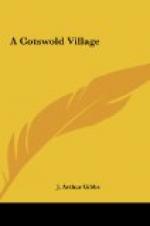If you either own or rent a trout stream there is no end to the improvements that can be made with a little time and labour. Deep holes or even lakes may be dug, great stones and fir poles may be utilised, to form eddies and waterfalls and homes for the trout. By means of a little stocking with fresh blood a stream may often be turned from a worthless piece of water into a splendid fishery. There is no limit to the articles of food which can be imported. Gammari, or fresh-water shrimps, caddis and larvae, and various species of weeds which nourish insects and snails—notably the chara flexilis from Loch Leven—may all be procured and transplanted to your water. The beautiful springs which feed the Coln at various intervals, where the watercress grows freely, would be of great service in forming lakes; there is so much poor marshy land even in the fertile valleys that might be utilised, with advantage and profit for the purpose of trout preserving.
Talking of watercress, this is a branch of farming which appears to be somewhat neglected on the banks of the Coln. The villagers tell you that watercress, like the oyster, is good in every month with an “r” in it: so that all through the year, save in May, June, July, and August, watercress may be picked and sent to market. But the proprietor of watercress beds attaches little importance to the fact that he possesses large beds of this wholesome and reproductive plant, and you will not see it on his table once in a month of Sundays. In London one eats watercress all the year round, more especially in the months without an “r,” but it does not come from the Cotswolds.
There is not much covert shooting on these hills. The country is so open and the coverts so small and deficient in underwood that pheasant preserving on a large scale is not practicable; for this reason the preservation of foxes is the first consideration. At Stowell, Sherborne, Rendcombe, Barnsley, and Cirencester, as well as on a few other large estates, a large head of game is reared; while foxes are plentiful too. But the owners and occupiers of most of the manors are content to rely on nature to supply them with game in due season.
However, for those gunners who, like the writer, are both unskilful and unambitious, the shooting obtained on the Cotswold Hills is very enjoyable. In September from ten to twenty brace of partridges are to be picked up, together with what hares a man cares to shoot, and a few rabbits. Then landrails or corncrakes, and last, but not least, an occasional quail, are usually included in the bag. Quails are rather partial to this district; during the first fortnight of September a few are generally shot on the manor we frequent. On August 17th this year we found a nest containing five young quails about half-grown.
But the real pleasure connected with this kind of sport lies in the sense of wildness. The air is almost as good a tonic as that of the Scotch moors, whilst there is the additional satisfaction of being at home in September instead of flying away to the North, and having to put up with all the discomfort of a long railway journey each way.




